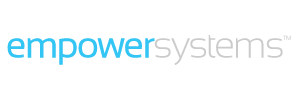
01 Mar The Critical Role of Physicians and Nurses in Shaping Clinical Documentation Systems
By: Empower Systems
Introduction
Electronic Health Records (EHR) have revolutionized the way healthcare is delivered, offering unprecedented access to patient data, improved coordination of care, and the potential to enhance patient outcomes. However, the effectiveness of EHR systems is only as strong as their design and usability. This is where the input of physicians and nurses—those on the front lines of patient care—becomes critical. Without their involvement in the development and refinement of clinical documentation systems, EHRs can become cumbersome, inefficient, and even detrimental to patient care. This article explores why it is essential for healthcare providers to actively shape these systems and how their insights can lead to more efficient, user-friendly, and clinically relevant documentation tools.
The Challenges of Current EHR Systems
While EHRs have improved many aspects of medical practice, they also present numerous challenges, including:
1. Workflow Disruptions: Many EHR systems are not designed with clinician workflow in mind, leading to increased administrative burden and workflow inefficiencies.
2. Data Overload: Physicians and nurses often find themselves navigating excessive documentation requirements that contribute to burnout and distract from direct patient care.
3. Poor Interoperability: Many systems lack seamless communication between different healthcare facilities, leading to fragmented patient records and inefficiencies in care coordination.
4. Cumbersome User Interfaces: Difficult-to-use interfaces slow down documentation and increase the likelihood of errors.
The Importance of Clinician Input in EHR Development
To address these challenges, it is crucial for physicians and nurses to play an active role in EHR development. Their involvement ensures that the system is designed to support, rather than hinder, clinical workflows. Here’s why their participation is indispensable:
1. Ensuring Clinical Relevance: Physicians and nurses best understand the nuances of patient care. Their input helps create systems that prioritize the most relevant clinical data, ensuring that providers can access critical information quickly and efficiently.
2. Enhancing Usability: By involving frontline clinicians in the design process, developers can create intuitive interfaces that streamline documentation, reduce cognitive load, and minimize errors.
3. Reducing Administrative Burden: Physician and nurse feedback can help eliminate unnecessary steps in documentation, allowing for more time with patients and reducing burnout.
4. Improving Patient Safety: Well-designed EHR systems, informed by clinical insights, can help prevent medication errors, flag potential contraindications, and provide decision support to enhance patient care.
5. Driving Innovation in Healthcare: By collaborating with software developers, clinicians can push for features such as voice recognition, AI-driven predictive analytics, and mobile-friendly solutions that further improve efficiency and patient outcomes.
Strategies for Engaging Clinicians in EHR Development
To effectively integrate physician and nurse input into EHR development, healthcare organizations and technology companies should consider the following strategies:
1. Establish Clinician Advisory Panels: Form multidisciplinary teams that include physicians, nurses, and IT specialists to provide ongoing feedback on system design and updates.
2. Conduct Usability Testing: Before rolling out new features, engage clinicians in usability testing to identify potential pain points and ensure the system aligns with real-world workflows.
3. Provide Training and Support: Ensure that end-users are not only involved in the design but also receive adequate training and support to maximize the system’s potential.
4. Encourage Continuous Feedback: Create channels for continuous clinician feedback, allowing for iterative improvements and adaptations as clinical needs evolve.
5. Leverage Data Analytics: Use real-world usage data to identify inefficiencies and areas for improvement, ensuring the EHR continues to meet the needs of healthcare providers and patients.
Conclusion
The future of EHR systems depends on the active participation of those who use them daily. Physicians and nurses bring invaluable insights that can help shape more efficient, user-friendly, and clinically relevant documentation systems. By prioritizing their involvement in EHR development, healthcare organizations and technology companies can create tools that not only streamline documentation but also enhance patient care, reduce burnout, and improve overall healthcare efficiency. The integration of clinician expertise in the evolution of EHRs is not just beneficial—it is essential.

